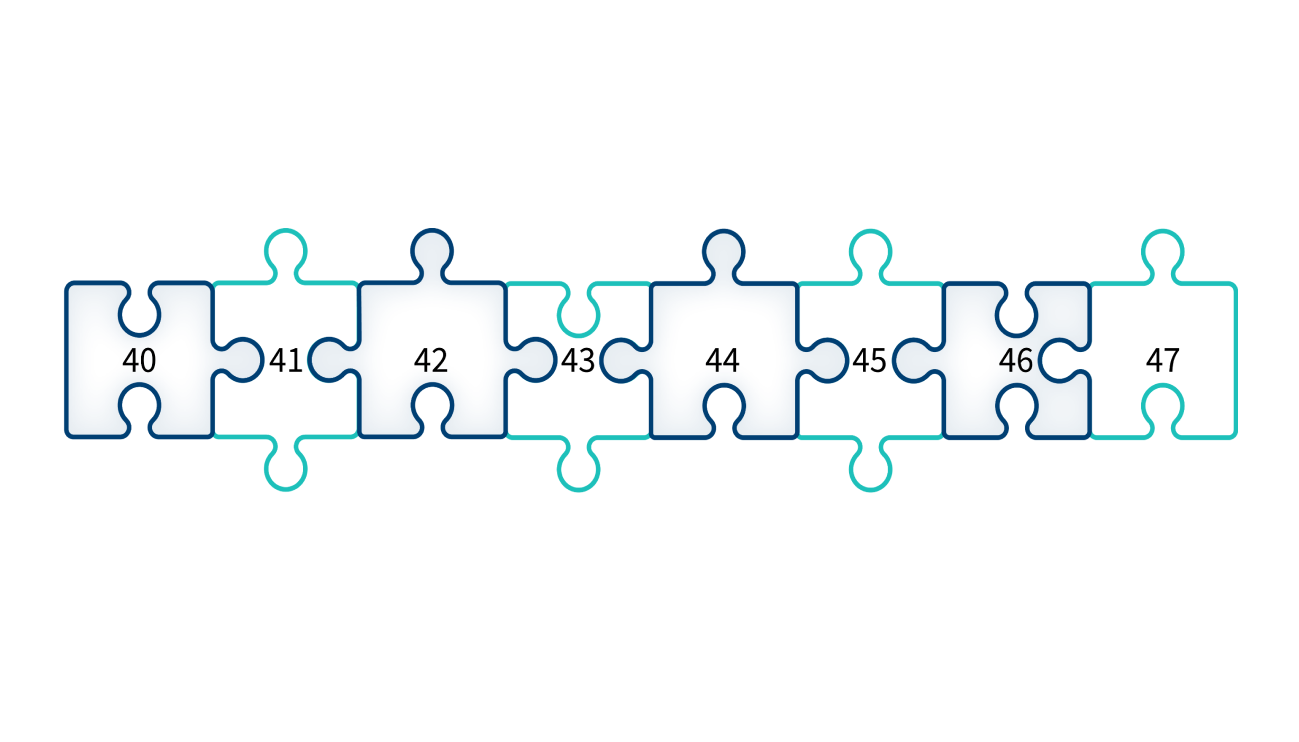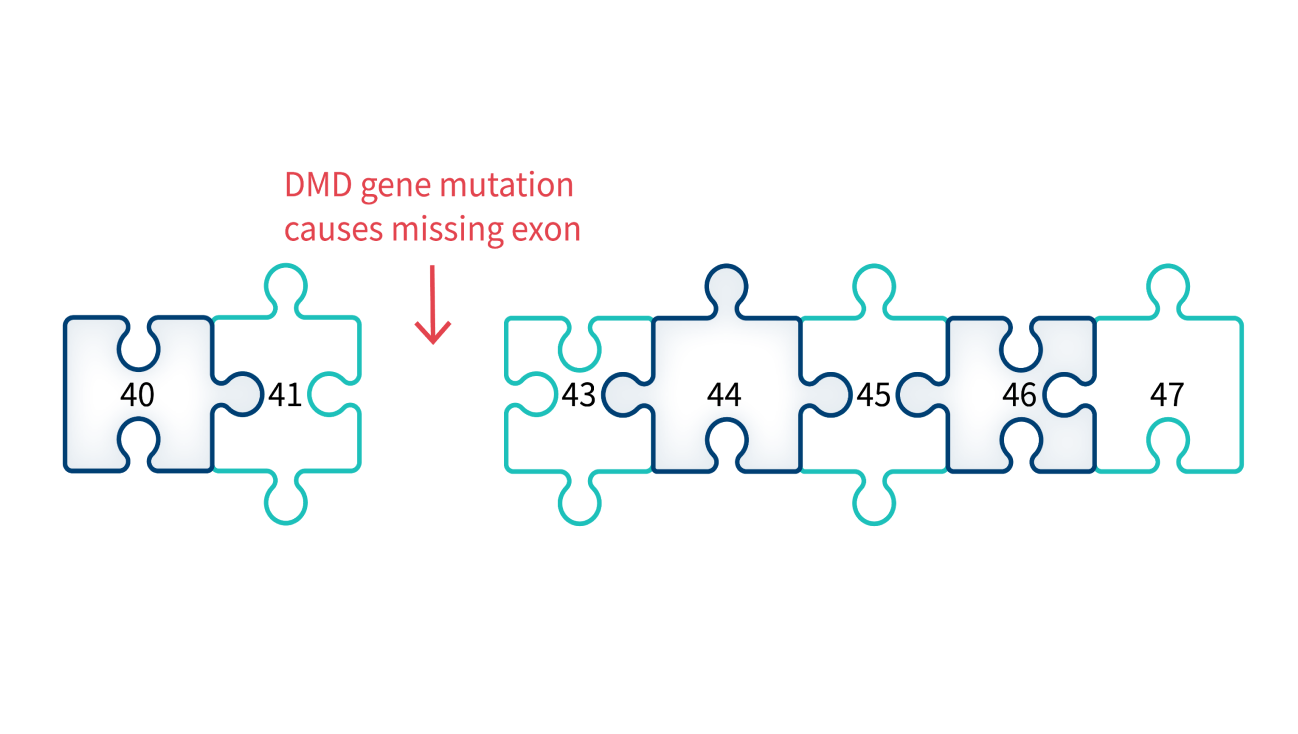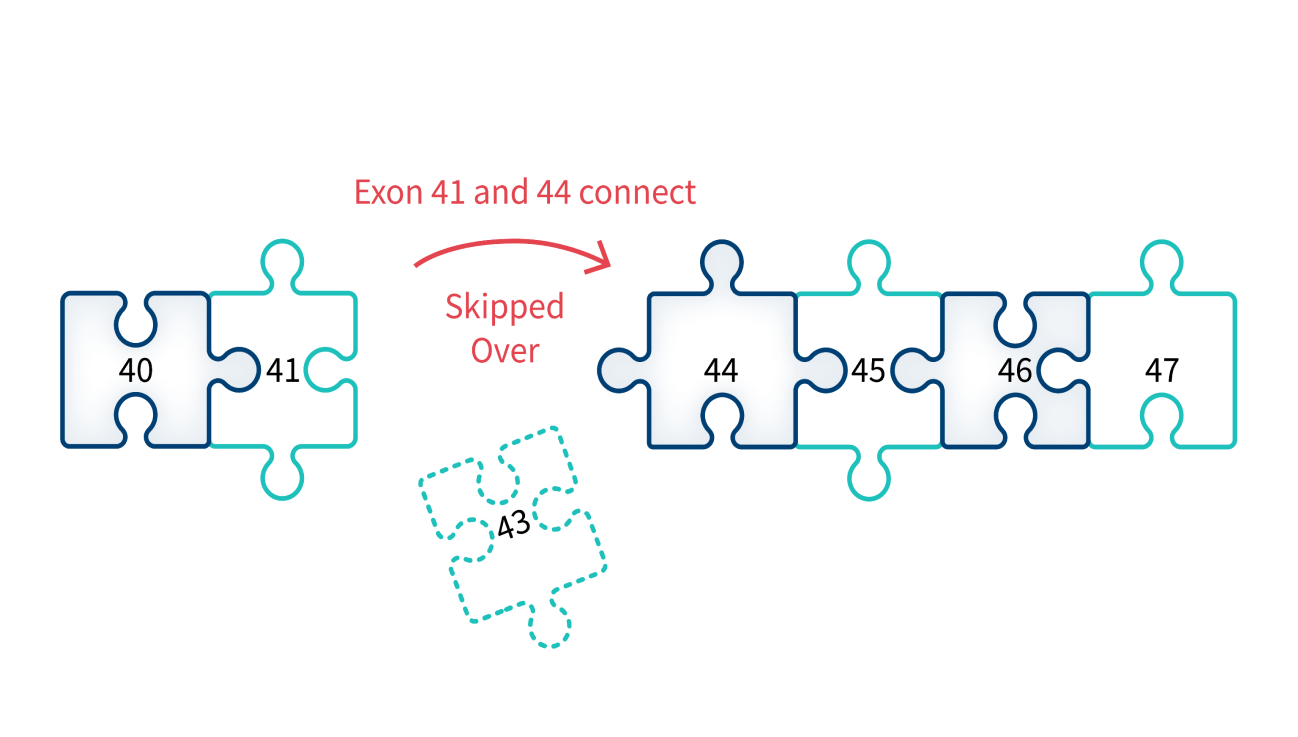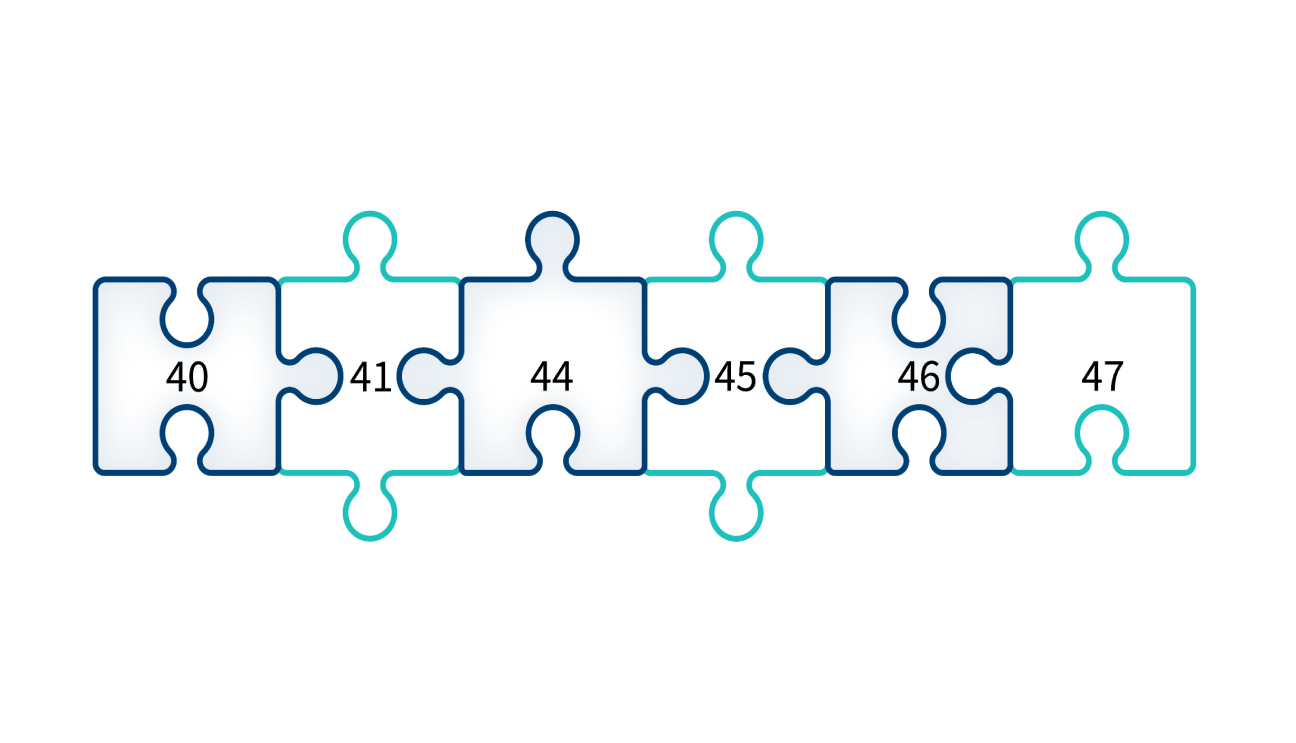
Exon-skipping therapy is currently being developed for Duchenne muscular dystrophy (Duchenne). Duchenne is a genetic disorder that results in muscle weakness and wasting, primarily in young boys.
People with Duchenne have low levels of usable dystrophin, a protein required to strengthen and protect muscle fibers. This causes progressive loss of mobility and can eventually lead to problems with the heart and lungs.
The instructions for producing dystrophin protein are contained in the DMD gene, the largest in the human body. People with Duchenne have mutations within this gene that prevent usable dystrophin production.
By “skipping over” the damaged parts of the DMD gene, exon-skipping therapy enables people with Duchenne to produce dystrophin 84-97% as long as the full-length protein.*
*For the most common mutations.
Genes are made up exons which contain the instructions for making the body’s essential proteins. During protein production, exons are linked together like pieces in a puzzle.

People with Duchenne have mutations in their DMD gene that cause one or more exons to be missing. Like a puzzle missing a piece, the remaining exons can’t connect properly, causing dysfunctional dystrophin to be produced.

Exon-skipping therapy “skips over” exons that prevent proper connection by masking them during protein production.

This means compatible exons can connect properly and produce shortened, usable dystrophin.

A little dystrophin goes a long way, and increasing levels to just 5% of normal could slow Duchenne progression. As muscle loss increases with time, the earlier a person with Duchenne can receive dystrophin-increasing treatment, the better. It’s estimated that exon-skipping could treat around 80% of people with Duchenne.
Different types of mutations can cause Duchenne, and each mutation can require specific exons to be skipped. This means that the tiny pieces of DNA used to skip specific exons need to be customized to each mutation type.
Each patch must undergo thorough testing to prove it’s safe and effective. Therefore, developing molecular patches for all targetable mutations could take some time. Researchers also need to figure out how often to repeat exon-skipping treatment to prevent symptom progression.
Despite these challenges, exon-skipping offers hope for people with Duchenne. Ongoing clinical trials show that this treatment is safe. With continued research and successful trials, exon-skipping could provide longer and brighter futures for people with Duchenne.